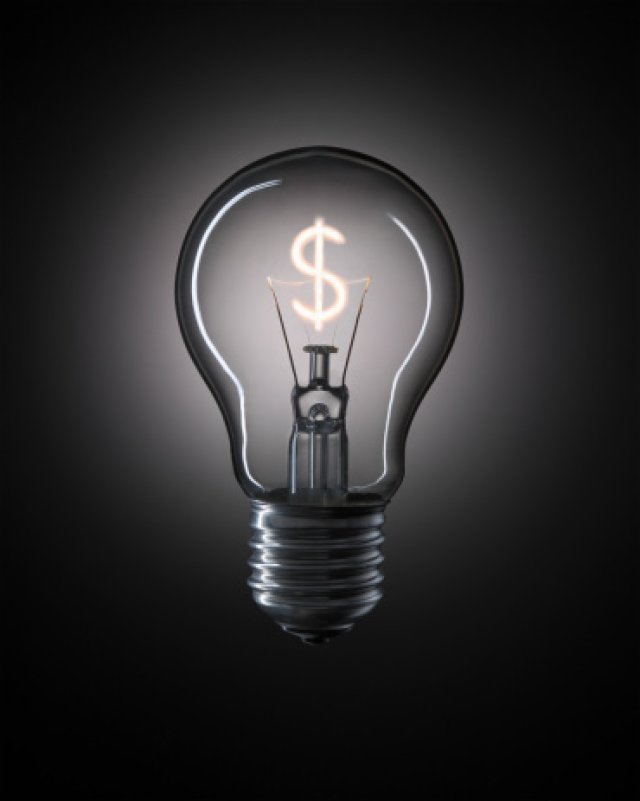
Power and gas prices are set to rise by a huge 16–19% on July 1, bringing a profit bonanza to the big three electricity companies — AGL, Origin and Energy Australia.
This unpopular price hike comes in the context of record low wage growth, record high housing prices and record levels of household debt.
The federal government is covering for the price hikes by blaming state governments for ruling out unconventional gas (Victoria), or moving too fast to renewables and not planning ahead (South Australia).
But, as many commentators have pointed out, electricity rates were falling before the energy sector was deregulated. In 2013, Professor Sharon Beder from the University of Wollongong wrote: “Prior to privatisation and deregulation, electricity rates in eastern Australia tended to fall over time and were amongst the cheapest in the world. Now that situation has reversed.
“Rates are soaring and are now among the most expensive in the world. The [Liberal Party] blamed this on the carbon tax even before the carbon tax came into being and despite evidence to the contrary since.”
Why have prices risen?
The high and rising price of electricity in Australia can be broadly summarised by four factors.
First, network “gold plating” (over-investment) is a major factor leading to the current high prices. Electricity companies rorted the regulations and said they were investing in necessary “network upgrades” to justify higher prices.
Grid upgrades to add more wind and solar were nowhere to be seen, however. This has meant that in Queensland, Victoria and NSW, network gold plating has led to bigger price rises in the past decade than South Australia, which is the trail blazer state for renewables.
Second, “standing offers” are used to subsidise discounted introductory deals. The vast majority of electricity users, who do not constantly shift from one electricity company to another, end up paying higher rates to offset the cost of introductory discounts designed to attract new customers.
These “standing offers” are a bad deal. The Grattan Institute released a report that revealed electricity companies’ rates of profit — 13–15% — are some of the highest in the world.
Third, electricity companies engage in price gouging: they deliberately create a shortfall in energy supply, which they then conveniently fill with expensive gas peaking power. This was one of the gouging methods famously used by US energy company Enron when there were widespread blackouts in California in 2000–01.
Finally, the price of gas is going through the roof. Given that gas peaking plants (power plants that are only run when there is high demand) are one of the key mechanisms by which electricity companies can price gouge, a rise in the price of gas has a “multiplier effect” on electricity prices.
The high price of gas is itself the product of an artificial market-generated shortfall. Australia is the world’s second-largest gas exporter and produces vastly more gas than is consumed domestically.
The big three electricity retailers are hardly crying poor.
Origin recorded an underlying profit of $354 million in 2016. AGL posted a half year net profit of $325 million last December. AGL is making more than $100 profit a year per household, up from $86 per household the previous year. Hong Kong-owned Energy Australia made $310 million profit for the year.
All three are part of the not-very-exclusive list of 670 large companies that paid no company tax in 2014–15 according to the ATO.
What is to be done?
We are paying for sky-high profit margins on top of artificially inflated electricity production and distribution costs. And this is for grubby coal- and gas-fired power.
But renewable energy, which we have very little of — despite being one of the best places in the world to build it — cops the blame.
Climate campaign group Beyond Zero Emissions released its Stationary Energy Plan in 2010 which estimated that for $370 billion Australia could move to 100% renewable energy over 10 years.
With traditional fossil-fuel generation, the cost of electricity is shared between the initial price of building the power station — typically this requires a loan — and the cost of putting the fuel (gas or coal) into the power station over its life.
In contrast, wind and solar plants have zero fuel cost, but the initial investment required for the plants and associated grid upgrades is higher than for coal or gas plants.
Put another way, while the upfront cost of building the plants is expensive, the cost in the decades ahead is negligible. Typically, wind and solar plants have a lifespan of 25–30 years before major upgrades are required.
How do we pay for it?
Building a publicly-owned 100% renewable energy system could be paid for in a number of ways.
Gross company profits hit a record high of $83 billion in the March quarter. For the past decade corporate profits before tax have hovered around $60 billion a quarter. Getting rid of loopholes — such as allowing companies to lend huge amounts to their subsidiaries and then counting the repayments as a tax deduction — would bring in about $6 billion a year.
Raising the company tax rate from its current rate of 30% to 49%, as it was in 1987, would deliver more than $35 billion a year.
These two reforms alone could raise enough revenue to fully fund a 100% renewable energy system in less than a decade.
Raising the tax rate on those earning more than $180,000 a year to 75% (as was the case in the early 1950s) would add another $30 billion annually.
The federal government can also borrow money at low interest rates to build publicly-owned wind and solar parks and repay the loans from tax revenue and power bills.
Renationalising the entire energy sector — generators, retailers and networks — and overhauling the system to run on 100% renewable would be the quickest way to reach a sustainable energy future.
[Zane Alcorn is a long-time anti-coal campaigner.]